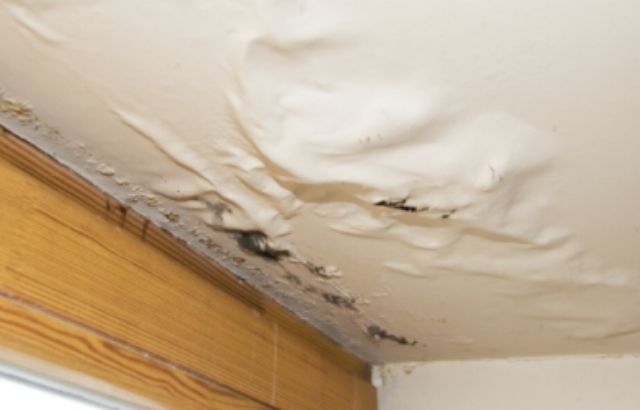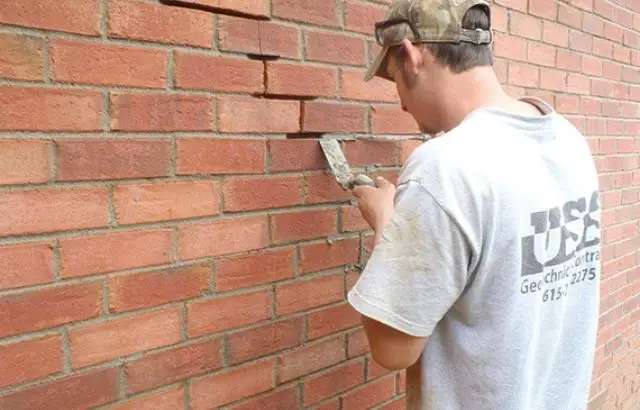Well, constructing your own house is a dream that comes true for most of us, especially in the present-day world. So, if you luckily have your own home, love it and maintain it to the maximum. Yes, I am referring to the maintenance of the water-damaged wall studs. If you have some damaged wall studs due to excess moisture, do not wait long and be proactive. Learn to remove wall tiles without damaging the plasterboard.
You can remodel your house yourself. Yes, you read it right. You can repair the studs’ damaged sections by cutting lower halves or fitting them in new wood. The catch here is you do not need to take the services of a company or a professional; instead, you can do it yourself. To provide you a comprehensive guide on how to repair water-damaged wall studs, I will try to give the essential tips to do this task.
What is a Wall Stud?
- A wall stud is a vertical frame in the entire building wall in a smaller cross-section area and plays a vital role in building structure.
- They spaced up to 16 to 24 inches in the center, along the wall, and run between the floor and ceiling. Plaster walls or drywalls attach to the edge of the studs. Check this guide to install PowerPoint on plaster walls.
- Dry rot is the common term for the damage caused by many wood species like fungi, which require a certain amount of moisture to live. The most common is brown rot which can survive even when the wood is not being wet. You can repair it by eliminating the source of moisture. But once when fungi have started growing on the walls due to moisture, it requires 20% moisture content for its continuous growth.
Importance of Repairing Water Damaged Wall Stud
The rotten stud can destabilize the whole wall, but you can quickly repair it with epoxy wood filler to make it strong. Before you start doing it, it is essential to disconnect the source of moisture causing it. This process will involve wall repair, plumbing repair, or both. The reason for water damage to wall studs is leakage in your homes anywhere; when you are sure that leak has been completely gone and a wall has been dry during heavy rain, you should not permit them to close the drywall when it gets 100% dry content.

Uncovering the damage:
Before repairing water-damaged wall studs in your house, that usually means cutting out the more extensive section of drywall. It is not difficult to fix a big damaged area than a smaller one, and you will notice that water damage on walls will be completely exposed. You have to give a long period to wood for drying when once it is completely dried, you can start the repair, but if the rot is not so wide, it means the stud has not already detached.
Ordinary Method:
- You should dig out all the rotted wood with the utility knife or screwdriver before you apply filler. Look at this link to install wood trim without a nail gun. Put the screwdriver in the right wood surrounding the apparent rot to get the damaged part. Be sure to remove all the decay, trowel it into two parts of epoxy, and then smooth it with the utility knife.
- Before you replace the drywall, give extra moisture protection to the stud by applying the wood primer’s coat.
- You can also choose a moisture meter that is an essential instrument used in most industries to check moisture content in materials like water damage walls and floors. Homes and building inspectors trust moisture meters to detect potential problems and damage to the moisture structure.
- You should not close the water supply until those studs can read under 12% moisture; to be safe, you should buy an inexpensive moisture meter to fulfill your purpose.
- Moreover, the damaged wall studs on the west and south sides should be cut at approximately 200mm on the wall plates, making it easy to remove the wall plates’ rotted sections. Equally vital to remove sand texture from walls. Then sections of west and south wall plates should be screwed into the proper position. Before re-sheeting the walls, insulation is to be placed in the wall’s south and west frames.
How to Repair Water Damaged Wall Studs
Keep on reading to get essential tips for replacing badly damaged window issues, repairing cracks, repairing floor joists, and sealing floor surfaces.
Tools:
- Mask
- Screw gun.
- Cheesecloth
- Nail gun
- Utility knife.
- Caulk gun.
- Safety goggles.
- Glue gun.
- Trowel.
- Hammer.
- Gloves.
- Paintbrush.
- Chisel.
Materials:
- Plywood Mesh dry tape.
- Tape.
- Drywall.
- Water sealant.
- Plywood board.
- Caulk.
- Fiberglass insulation.
- Drywall mud.
Step 1:
It would help if you were entirely sure about the electric outlet’s power has been shut off from the circuit breaker. Now remove the outlet.
Remove the outlet when the power is off.
Step 2:
Now start with exposing the wall when you have removed the outlet.
Cut off the mold with the help of a utility knife. Removal of baseboard should be done with the hammer and chisel.
Step 3:
Now mark the gap’s location and remove the existing rotted drywall and the insulation which has mold in it.
Step 4: Cut and seal the plywood:
Make a replacement for the plywood board and prepare it for repair. Take a measurement and cut it according to its size. Use a hydro-stop waterproof sealant to paint the board and cover it with a layer of cheesecloth. From the corners, cut the cheesecloth at a 45-degree angle to allow it for overlapping. Now give the3 board enough time to dry completely.
Step 5: Seal under the window:
Now use the same sealant to paint the damaged area under the window. Apply the glue freely to make it waterproof seal.
Step 6: Preparation of repair outside the window:
The repair to the outside of the window cleans the window sill and ensures no free holes are free of debris.
Apply a bead of caulk on the cracks in the wall on the outer side of the window.
Make proper cohesion use your finger to run along the seam.
Step 7: Put plywood:
When you notice that the plywood has wholly dried, fix it in place to close the gap.
A smaller block should be placed behind the board to give it essential support. Now replace the bottom plate of the load-bearing wall with the help of aboard. Then the board should be attached to existing studs in the window frame.
Step 8: Replace the insulation and outlets:
Removal of damaged outlets should be done before replacing the drywall screw. Now put the new insulation in between. Do not forget to put the paper inside facing the living area.
Step 9: Replace the drywall:
Point out the water-damaged wall studs with tape; this will help locate them when you put the drywall in place. Application and nailing of drywall mud to be seams should be made. Cover it with more mud and apply a strip of drywall to the hem. Sand it down and allow it to dry; repeat the process if necessary. From all four sides of a repair site, you should remove the drywall to uncover 50% of a stud.
Step 10: Paint and replace the baseboard:
The baseboard should be replaced, nailed, and painted. Replacement of termite damage studs.
The average cost to replace rotted wall studs ranges from 2000$ to 5000$, with the average homeowner spends around 3000$ on grown water extraction, which includes repairs the drywall, flooded bathrooms, and ceilings.
To replace termite damage studs:
There are two main ways;
You can replace damaged sections of wood entirely. You can also add a wood sport adjacent to damaged wood.
How to Repair Water Damaged Wall Studs: FAQs
How do you repair rotted wall studs?
First, uncover the stud’s rot-infected area by cutting away drywall with a utility knife and drywall saw.
Take steps to correct the source of moisture. Then chip the rotted wood out of the stud using a stiff utility knife and flat screwdriver.
Finally, replace the wall covering.
How do you fix a wall that has been damaged by water?
Clean the area before you start the task. Clear and scrap the flaking site, then cover the water-damaged area with a peel-stop or Sealer binder. Apply the Sealer correctly and sand the surface. Apply water-based primer and paint on it.
Can water-damaged drywall be repaired?
Yes! Water-damaged drywall can be repaired well by using setting type joint product, also known as mud. The readymade mixed mixture is not consistent enough and is vulnerable to moisture present in the wall.
Remove the bubbling joint product and paint it using a utility knife to eliminate the rotten material.
Conclusion
To conclude this topic, if you want to do it yourself, the above tips and tricks on how to repair water-damaged wall studs will be constructive because studs on the load-bearing wall support the roof and are considered essential parts of the home. The rotten studs compromise the structural ability and strength of the wall and house. Proper repair of the damages due to water can restore the structural durability and help maintain the wall and home.
Read More:
- How To Cover The Exposed Foundation Wall
- How To Build A Brick Wall Foundation
- Learn How To Decorate A Brick Wall Outside




